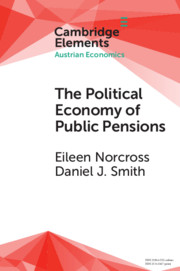Element contents
The Political Economy of Public Pensions
Published online by Cambridge University Press: 29 July 2021
Summary
- Type
- Element
- Information
- Series: Elements in Austrian EconomicsOnline ISBN: 9781009019965Publisher: Cambridge University PressPrint publication: 02 September 2021
References
- 3
- Cited by



